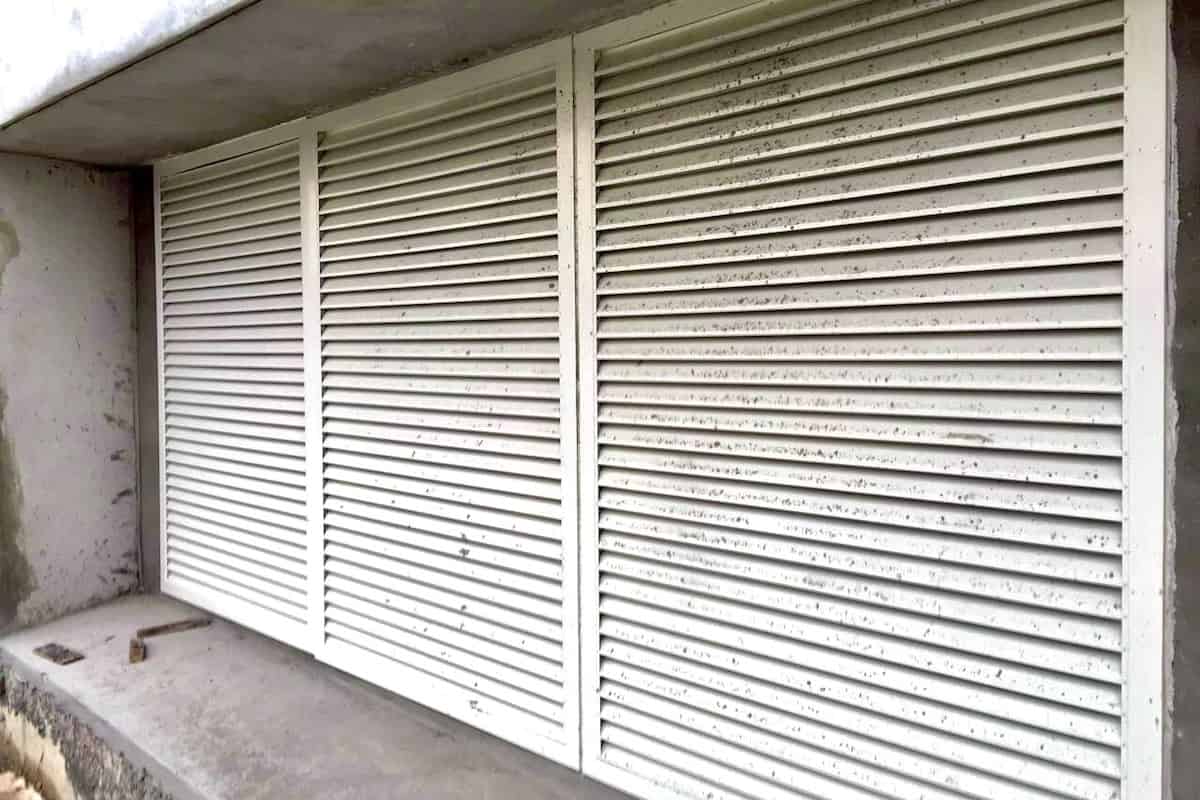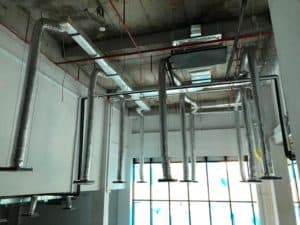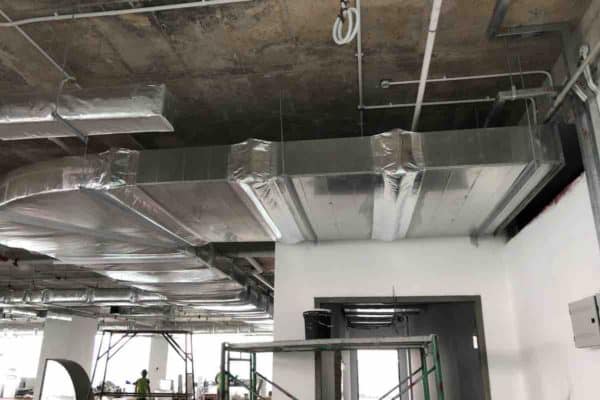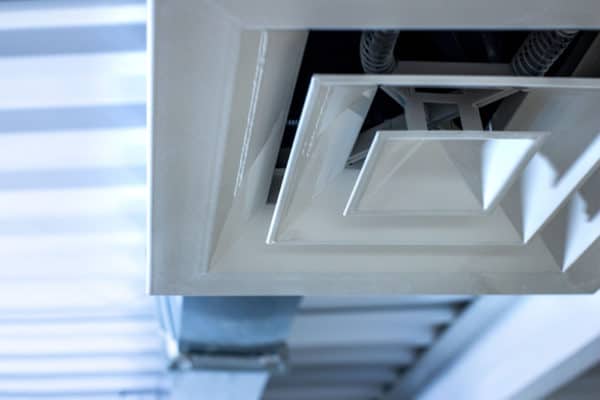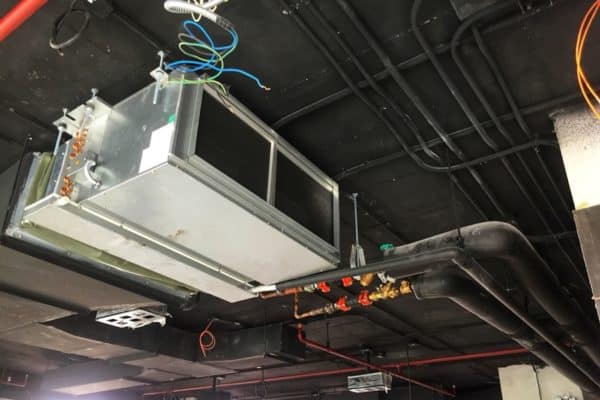4 Types of Grilles in HVAC (Common Applications)
Grilles are essential in HVAC. They are responsible for airflow distribution and controls. However, there are many types of grilles in HVAC. So, what are the most common types of HVAC grilles?
Generally, there are 4 common types of grilles in HVAC; a) louver grille, b) linear bar grille, c) deflection grille and d) external weather louver. Among them, the louver grille is the most common type of grille in HVAC.
HVAC grilles are used to cover the supply air outlet and the return air outlet of the HVAC system. They are aesthetically-appealing covers that are exposed under the ceiling in the HVAC air distribution system (ductwork).
Many people (including myself) are always wondering what is the difference between a grille and a diffuser. Well, they are quite similar except grilles are generally lacked airflow distribution while diffusers are meant to spread out the air in different patterns.
So, let’s take a look at the 4 types of grilles in HVAC and their common applications as well as some of their alternative names.
1. Louver Grille
Louver grilles are the most common type of grille used in HVAC. They have fixed angled blades that don’t allow any sort of airflow direction controls. Most louver grilles are white in color.
Most people working in the HVAC industry don’t use the name louver grille. Instead, louver grilles are more commonly referred to simply as return air grilles.
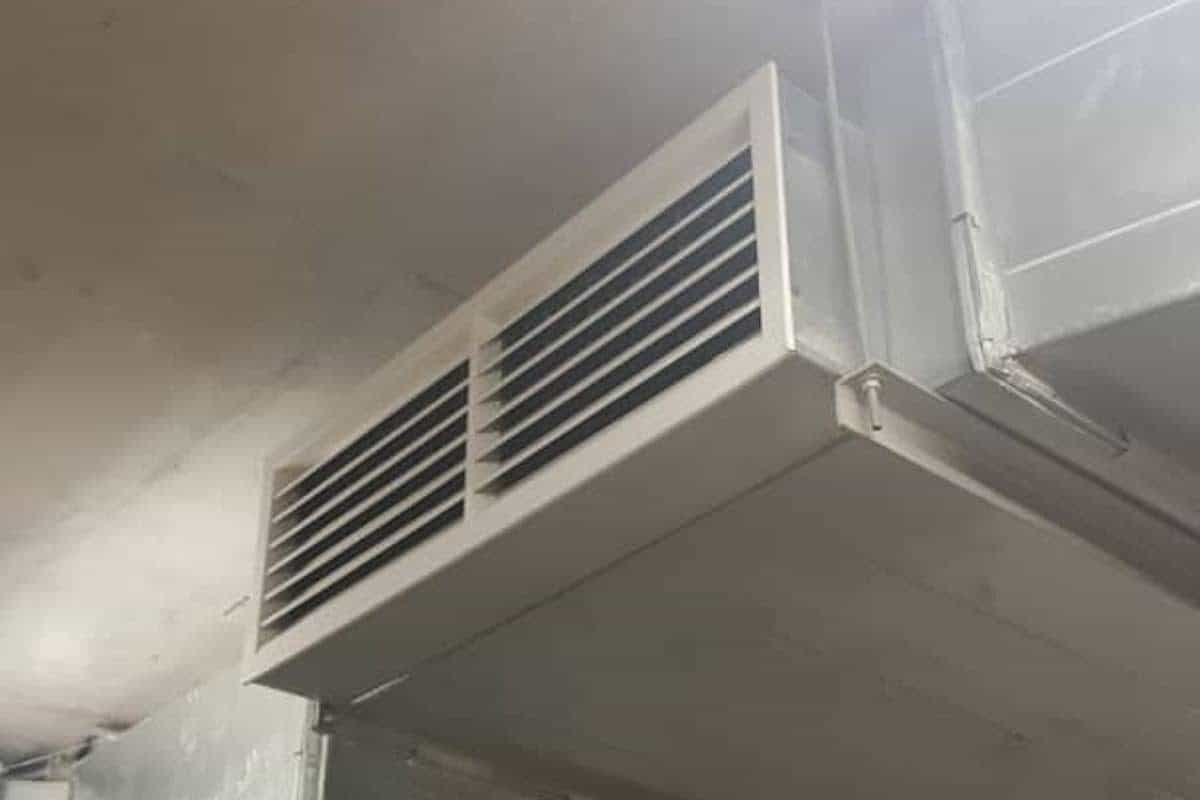
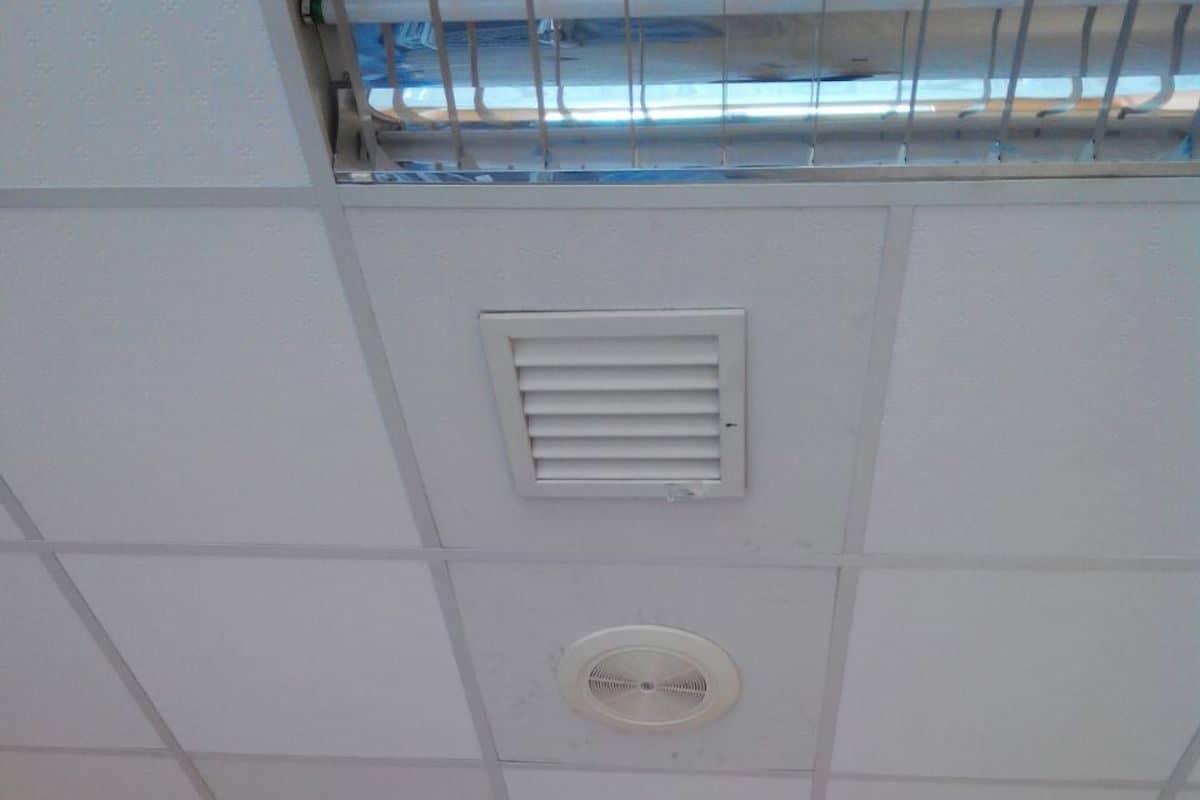
Usually, louver grilles are made of aluminium. However, if you want to save cost, you can go for the galvanized iron (GI) version. GI louver grilles are more prone to rust and they are heavier too.
When used as air conditioning return air grilles, the dimension of louver grilles is mostly 595x595mm (SI unit) or 2x2ft (Imperial unit). This is to match the size with their respective supply air diffusers.
Relevant post: 6 Types of Supply Air Diffusers and Their Applications.
Nevertheless, they can be made in multiple different sizes. However, each size has to be at the scale of 50mm (2″). For example, you can’t order a 320x480mm grille but a 350x500mm grille or a 650x750mm grille. But, odd sizes are possible at a higher cost.
Louver grilles also have an openable type where a filter can be inserted to block dust and other particles before the air returns back to the air conditioner. However, they are less common since the air conditioner itself already has a filter. The additional filter may cause low airflow problems.
Relevant post: Do AC Return Vents Need Filters to Reduce Dust?.
Sometimes, air conditioning return air grilles are fitted with an air volume control damper such as a radial fan blade damper, a crown damper and an opposed blade damper. With a damper, return airflow can be better tuned and balanced.
Louver grilles are not weatherproof. Their blades’ profile can’t prevent rainwater from entering. If you need a grille on the external wall of a building, you’ll need to opt for an external louver grille which I’ll be discussing later in this post.
2. Linear Bar Grille
Linear bar grilles are more commonly used in lobbies and halls because they are more aesthetically appealing than louver grilles. They are generally more expensive than louver grilles.
Similar to louver grilles, linear bar grilles are mostly white in color. They do not have any sort of airflow direction controls. However, most of them are made of aluminium only.
The width of linear bar grilles is determined by the number of slots on the grille. The more slots you want, the wider the grille becomes. Usually, linear bar grilles are around 4-5 slots.

One of the greatest advantages of linear bar grilles over other types of HVAC grilles is that linear bar grilles can be made curves. Many hotels and luxury rooms have curvy walls and thus, architects love to have curve grilles on those walls.
However, the downside of using linear bar grilles is that you’ll need a return air plenum box if you want to have air volume controls. With a return air plenum box, the linear bar grilles occupy more space.
Relevant post: 4 Types of HVAC Plenums (Basics & Applications).
Linear bar grilles are almost always used as air conditioning return air grilles. Rarely do people use them as exhaust air grilles and fresh air grilles, let alone pressurization air grilles.
Each linear bar grille has a maximum length of around 2500-2700mm. If you need a longer one, the supplier will mostly provide you multiple linear bar grilles for you to join them together and form a continuous length of the grille which, looks natural and beautiful most of the time.
In the meantime, I would like to inform you that you can learn quicker by getting my HVAC Begin (eBook) if you’re a beginner. But, if you have a year or two of experience, then I would suggest you consider my HVAC Basics (eBook). Nonetheless, I encourage you enroll in my HVAC Beginner Course: 10 Days to Become Competent in HVAC if you want to equipped yourself with a complete set of basic HVAC skills.
HVAC Beginner Course
Learn the most basics and foundational HVAC skills including cooling capacity calculation, equipment selection, duct sizing, pipe sizing, exhaust fan sizing, controls, electrical and more.
3. Deflection Grille
Deflection grilles have two types; a) single deflection and b) double deflection. Double deflection grilles are more common than single deflection grilles. However, deflection grilles generally are not as common as louver grilles.
Deflection grilles are sometimes confused with deflection diffusers. In fact, both are actually the same thing. Some people preferred to use the word grille while others preferred to use the word diffuser.

Usually, single deflection grilles provide only vertical airflow direction controls. Meanwhile, double deflection grilles allow both vertical and horizontal airflow direction controls. If you ask me, deflection grilles are more like deflection diffusers.
Similar to louver grilles, deflection grilles are made of either aluminium or galvanized iron (GI) with the former one being lighter and the latter one is cheaper.
The main advantage of deflection grilles other than airflow direction controls is that the free area of deflection grilles is larger than other types of grilles in HVAC. Usually, deflection grilles have a free area of around 70% while other types of grilles are around 50% free area.
Free area is an important design parameter for grilles because we need it for grille sizing where it determines the size of the grille and thus, the cost, the quantity and the space requirement of the grille.
Relevant post: Return Air Grille Sizing Guide: CFM Chart & Calculation.
However, deflection grilles are less beautiful than other types of grilles in HVAC. Thus, they are more of a functional grille than a decorative grille. Hence, they are more commonly used in low-cost buildings.
4. External Louver Grille
External louver grilles are very similar to louver grilles except they are designed to prevent rainwater from entering even when outside is blowing strong wind.
The blades’ profile of external louver grilles is narrower than louver grilles. This helps them to prevent rainwater from splashing in and entering through the grille into the ductwork.
Since most external louver grilles are installed on the exterior wall, they must be fitted with an insect screen to prevent insects, birds and other foreign objects from entering and making nests inside the ductwork of the HVAC system.

When I was working on a renovation project, I’ve seen bird nests inside the ductwork of the smoke extraction system. The discharge section of the duct is almost fully covered with woods and sticks. If there is a fire, the smoke extraction system may not work effectively.
Because external louver grilles are designed to withstand weather, they are always made of aluminium. I’ve not seen any external grille made of galvanized iron (GI). If they do, they will not last.
External louver grilles are typically very large in size. They can be somewhere around 3000x2500mm or more. Again, they may come in multiple sections if the size is beyond a certain limit.
Generally, external louver grilles have lesser free area than other types of HVAC grilles and thus, they are usually much bigger than other grilles.
External louver grilles are most commonly used as the exhaust air grille of the smoke extraction system, the fresh air grille of the pressurization system and the exhaust grille of the toilet and kitchen exhaust system.
Lastly, consider my HVAC Begin (eBook) if you’re a beginner and you want to have a foundational knowledge in HVAC. But, if you have a year or two of experience, then I would suggest you consider my HVAC Basics (eBook). Nonetheless, I encourage you enroll in my HVAC Beginner Course: 10 Days to Become Competent in HVAC if you want to equipped yourself with a complete set of basic HVAC skills.
HVAC Beginner Course
Learn the most basics and foundational HVAC skills including cooling capacity calculation, equipment selection, duct sizing, pipe sizing, exhaust fan sizing, controls, electrical and more.
If you have anything to add (or ask) about this topic, leave a comment down below!


